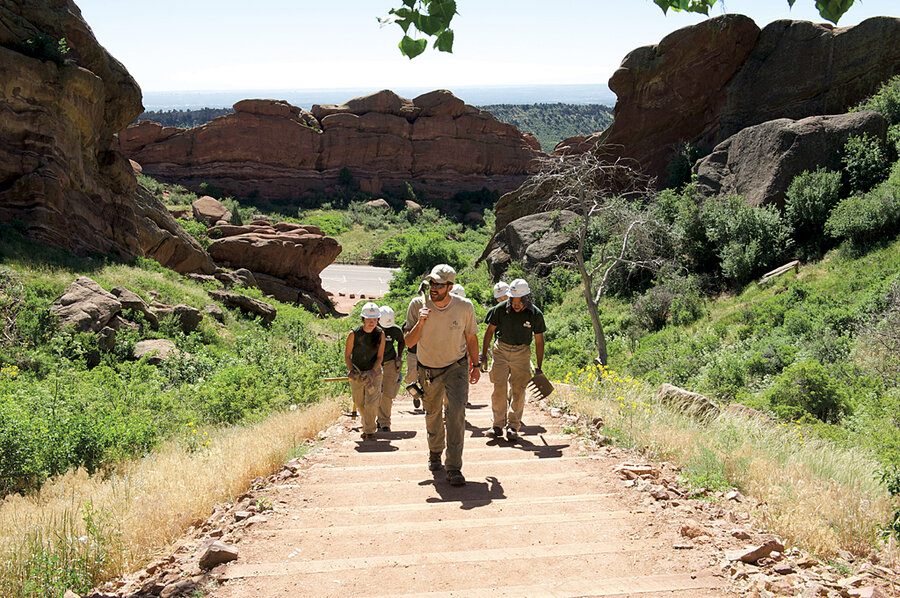In gauging the effects of sequestration, there’s been much talk about furloughs or layoffs. But for 400 or so young people in Colorado, the cuts mean they were never even hired.
Every year, the Colorado Youth Corps Association (CYCA) puts together crews of young people – generally between the ages of 14 and 25 – who spend weeks or months working on public lands: improving trails and campgrounds, helping reduce wildfire danger by removing fuels, felling trees affected by beetle kill, and removing the nonnative tamarisk trees that clog riverways.
The jobs the crews do are vital, says Jennifer Freeman, executive director of the CYCA. But just as important are the skills and work experience the corps members gain, as well as the AmeriCorps scholarship money that most earn for furthering their education.
“There’s a great demand,” Ms. Freeman says. In the past two years the CYCA has had nine applications for each available slot. For the past few years, it has employed about 1,600 young people.
This year, Freeman has seen most of the funds for crews dry up from the Bureau of Land Management – formerly one of its best supporters – because of the “sequester.” Whereas last year the BLM funded 43 crew weeks (a crew week is a week of work for eight to 10 crew members), this year it is funding four.
Overall, Freeman estimates about $500,000 in federal funding cuts this year for Colorado youth corps, and she’s worried that next year there will be even more cuts, especially from the US Forest Service.
“When sequestration hit, we were in full hiring mode,” Freeman says. “It was hard to be in full-on recruitment and then have those funding sources be unsure and then fall off completely.... With unemployment at 16 percent for youths and young adults, there are no jobs to spare.”
The Colorado office of the BLM has been a great partner in the past, Freeman says – in part because it needs the work done, but also because it believes in grooming the next generation of workers and engaging young people in the outdoors.
“The fact that youths and young adults seem disproportionately affected by these cuts is challenging to watch,” she says.
– Amanda Paulson, staff writer







